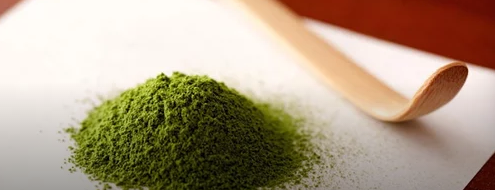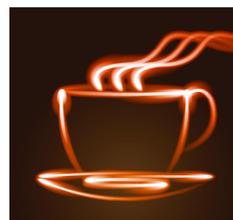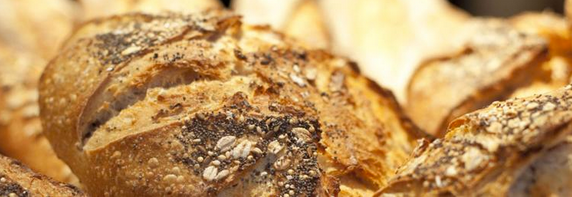How to sell tea to young people like coffee?
Zhang Zihua, 26, opened a cafe at Fudan University four years ago. At that time, he felt that the coffee was foreign and the tea was old. No one among his friends doesn't think so.
The elusive young man changed his mind in an instant. Now, standing in front of several delicate glass and metal instruments, Zhang Zihua is eager to prove that the tea business, which used to be thought to have nothing to do with young people, is "more promising." "Tea can also become very foreign." He said with certainty.
This is obviously about coffee. Zhang Zihua opened a tea shop "each other's Tea" two years ago and bought these instruments called Steampunk. They are made in Salt Lake City, USA, using the siphon principle, and the parameters are controlled by the tablet next to the machine. Steampunk was originally used to make coffee, but tea can also be made as long as the parameters are set to 90 seconds, 350ml of water and 190C.
In the "each other's Tea" shop
Not only Zhang Zihua, Wang Yi also believes that young people should want such a cup of tea-not that it has to be brewed by machine, but at least, compared with traditional tea shops in the past, it has a more novel concept, more efficient production and more stable quality. You can take away a cup of tea like buying Starbucks coffee. The price is about the same, around 30 yuan.
Wang Yi is vice president of operations for tea brand Vital Tea, which belongs to a new element of a catering company founded in 2002, specializing in Western-style light meals. In 2010, when the new elements were transformed into drinks and light foods, they opened their first cafe in Shanghai's densely populated people's Square, but soon failed.
Two years later, the catering company bet on tea. Wang Yi said that the company found "the explosion of the tea market" through research. Although no specific research data were provided, the company was clearly persuaded by the extent of the explosion that it transferred 20 of its 100 employees to run Vital Tea and plans to open 200 stores over the next decade.
Vital Tea makes bar
These entrepreneurs and companies believe that selling tea may be more promising than selling coffee. In particular, coffee shops have exploded in first-and second-tier cities over the past few years, and young people are likely to need a change. Some of them added that compared to coffee, "tea is in the Chinese DNA" and there is no reason why it should not be popular again.
There may be no need to set the two against each other.
Miao Qin is the founder of tea brand inWE. Coffee brand Starbucks is his role model. In inWE's store, clerks wear overalls aprons, glasses replace sand pots, and coffee handcups, drip kettles and Steampunk semi-automatic tea makers are on the bar.
Steampunk and its schematic diagram
Before leaving McDonald's in January 2012, Miao Qin was the chief operating officer of McDonald's China. He is also the one who is responsible for introducing McCoffee to China. In 2009, the "freshly brewed" coffee brand replaced the ordinary coffee drink that hit the shelves in 2007 in China. However, it sells for less than 10 yuan. McCoffee planned to dominate the Chinese coffee market, and Starbucks won.
Miao Qin believes that one of the reasons for Starbucks' success is positioning and price. While studying for an advanced EMBA degree, Miao Qin did a survey on coffee, in which he divided coffee into three categories: $1 supermarket coffee, $3-$6 Starbucks coffee and Italian casual coffee. According to the survey, people between the ages of 25 and 35 are most likely to consume the mid-range coffee provided by Starbucks.
If you compare it with tea, the street full of milk tea shops and high-end teahouses is one end of the classification. "there is no such kind in the middle," Miao Qin said. "they really don't have any choice of tea, so they have to go to Starbucks when they want something to drink." It's time to pull them back. 19 months after leaving McDonald's, Miao Qin founded inWE and set the per capita consumption at just over 30 yuan.
InWE's newly opened Kerry Center Store in Hangzhou
He also introduced the sophisticated Steampunk and put it in the most prominent position at the bar. "I'll give you a new, healthy, convenient and standardized way to make tea, why not?" Miao Qin pointed to the tea maker and stressed, "We are a standardization company," just like Starbucks.
The coffee brand, founded in Seattle Park Market in 1972, became popular because of the concept of "third space" (space outside the office and home). Since 2000, it has enabled a fully automatic machine, ThermoPlan, to minimize errors in time, temperature and water, and to ensure that the quality of coffee in this leisure space is stable and error-free.
Starbucks also bought Teavana, the largest tea chain in the United States, in 2012. Teavana is also a classic case of standardization. Zhang Ziye learned about "selling traditional tea in a modern and standardized way" at Teavana, the largest tea chain in the United States. At Teavana, another $14000 machine, the BKON, is used to make tea to precisely control time, temperature and water. In Starbucks' internal publication Teavana Passport, which is distributed to employees, the introduction of each tea contains these three indices to minimize errors.
BKON as a competitive product of Steampunk
It's just like Starbucks making coffee.
"We sell tea as much as we sell coffee." Howard Schultz, CEO of Starbucks, said in an interview with Reuters in 2012 that they also plan to replicate Starbucks's success on Teavana, opening 500 stores by 2015. Since its inception in 1972, Starbucks has opened more than 24000 stores worldwide and more than 2000 stores in China in the past 17 years.
Now, Miao Qin and Wang Yi also plan to replicate this success in the mid-range tea market. But before that, they have to attract the attention of young people. Once full of confusion and fear of "cultural invasion", people repeat the same question: how on earth did Starbucks succeed in the hometown of tea culture? But on the whole, this is not the cultural hometown of people in their early twenties. Most young people may have shunned the drink as Zhang Zihua did four years ago.
It is not strange that young people follow the fashion, it is true that interesting things do not happen very often in the tea industry.
Wang Yi believes that after Chunshuitang, a Taiwanese tea brand, launched new Taiwanese foam black tea and pearl milk tea in 1983 and 1987, which have almost been tarnished by cheap production, it is rare to hear that new tea drinks have been promoted. In 2012, the tea company launched Markoti Mocktail, a brand that mimics "cocktails".
Mocktail's latest product line, cocktail tea
Young people may not expect to see the light when it comes to drinking tea, nor do they seek such an experience at Starbucks. Beautiful tea packaging, looks like enough modern and professional equipment, interesting store design can almost create the "whole atmosphere" of drinking tea.
This can be used to explain why tea has also become popular in the United States. According to The Tea Association of the USA, the revenue of the tea chain increased from $2 billion in 1990 to $11 billion in 2015, and there are many peers behind Teavana-MatchaBar, which specializes in matcha, opened next to the office of Vice Media, a subcultural media, specializing in screening and supplying tea to restaurants. In Pursuit of Tea, which was established in 1999, has developed much faster than it did a decade ago.
Miao Qin and his team have appeared in as many places of young people as possible in the past five or six months. They opened a store on the university road where young people gathered, and took inWE to the handmade Nautilus bazaar and Shanghai Design week in Shanghai. After that, creative furniture, handmade soap, dried flowers and teacup sets all appeared in inWE stores, which young people are likely to like. Zhang Zihua selected several tea artists in their early 20s who were tested like baristas, but not with the conservative ideas of the traditional tea industry. "each other's Tea" has also entered a photo studio called "naive Blue", which is quite popular among young people.
Peripheral products sold in inWE stores
Wang Yi believes that they all have to "put aside the concept of Chinese tea." Although Vital Tea hired Tianfu Tea, an influential Taiwanese tea company, as one of its suppliers, Vital Tea also sells Southeast Asian tea, milk tea and European tea in addition to supplying Chinese tea. This is almost the consensus of tea sellers. Even Wu Yutai, an old tea brand, opened three "tea bars" in Beijing in October last year to sell new-style teas, including Louis Boss milk tea and buckwheat green tea imported from South Africa.
Every year, Vital Tea adjusts its menu twice in summer and winter, similar to Starbucks' new seasonal products, rather than rushing to drink spring tea in the traditional sense. "there is no need for young people to bother to understand these things." Wang Yi said.
Yes, if Schultz plans to be a vassal of the Italians after Schultz visits Milan, Starbucks probably won't show up. The story that the Miuqins want to recreate is "how Starbucks learned from Italian cafes and surpassed them." "I want to go back to tea, but not the one in my parents' hands." When Miao Qin was selected by McDonald's US headquarters in 2010 but refused to transfer, he thought so-he wanted to do something "popular".
As a result, Miao Qin quickly renovated the store and updated the products every 1-2 months. Since its launch in early 2015, inWE's products have been updated to the sixth generation. He also acquired the young tea brand Nenl ü Tea tender green tea, and partnered with JD.com founder Liu Qiangdong to form Dongqin Restaurant.
It is better to develop faster and find the way to the new tea business before Teavana enters China. Teavana entered the European market a few weeks ago as a replacement for tea ingredients in Starbucks stores, and in a few months it will come to China in the same way. After all, this American tea brand and its parent company Starbucks are textbooks for these new Chinese tea sellers.
Teavana store
Iced tea made by Teavana on the Starbucks menu
However, given that the attention of young people is far from being attracted by the new tea, people do not think that the industry is about to engage in fierce competition. Tea sellers are looking forward to more colleagues to join them. "the most important thing is to make the tea market bigger, so that consumers can choose, such as going to Teavana on Monday and Vital Tea on Tuesday." Wang Yi said.
However, these tea sellers with experience in the coffee industry should be aware that Teavana is experiencing a recession in the United States, and news of shop closures is coming from time to time. How do you sell coffee? how do you sell tea? Starbucks' approach to replacing ingredients rather than opening independent stores also suggests that Schultz's judgment is not always right. What's more, they are probably robbing the same group of consumers.
The fate of this "new business" may be different in China. Wang Yi feels that this is more or less like adding "new elements" to "old-school things", which is very popular with young people nowadays.

Important Notice :
前街咖啡 FrontStreet Coffee has moved to new addredd:
FrontStreet Coffee Address: 315,Donghua East Road,GuangZhou
Tel:020 38364473
- Prev

Why doesn't capital like 70 billion of China's coffee market?
According to the popular statistics in the market, the size of China's coffee consumption market reached 70 billion in 2015, and it is breaking out at an annual growth rate of 15%, reaching a trillion yuan by 2025. Paradoxically, why is capital dismissive of a thriving industry with a market size of 70 billion and a market growth rate of 15 per cent? To this end, Nei Shenjun specifically asked several senior capitalists.
- Next

Starbucks has invested in an Italian bakery brand, and the meal will be added to some stores.
Starbucks announced a partnership with Princi, an Italian bakery and restaurant. The company, called Princi, cooperates by buying a stake, but neither side has disclosed the exact amount. Starbucks is not only a financial investment in it, but also includes that Starbucks has won the right to operate Princi outside Italy, and that Starbucks will be sold in its own high-end stores.
Related
- Why are the coffee in some coffee shops not enough after being frozen? What should I make up for my American latte cappuccino coffee after being frozen?
- How much water does it take to steam coffee by hand? Why is the coffee brewing and steaming time 30 seconds? What is the purpose of steaming coffee?
- The suspected drink contains too much caffeine! Overlord Tea Lady responds urgently!
- Starbucks rejects antique paper coupons?! Netizen: Missed marketing opportunities!
- What ratio of water temperature and ground does the smart cup method use to press coffee? The difference between brewed coffee and filtered coffee?
- What is the standard process for the purpose of coffee cup testing? What is the difference between hand-brewed coffee and cup testing?
- How to use hand-brewed coffee paragon small golden balls? How does cold coffee lock in the aroma of coffee?
- Is American coffee black? What is the difference between American coffee and drip coffee?
- Unexpected! Well-known tea beverage brand Lele Tea will withdraw from the Zhengzhou market!
- Starbucks enters the fashion and beauty industry?! Netizen: Give me an ice American eye cream

